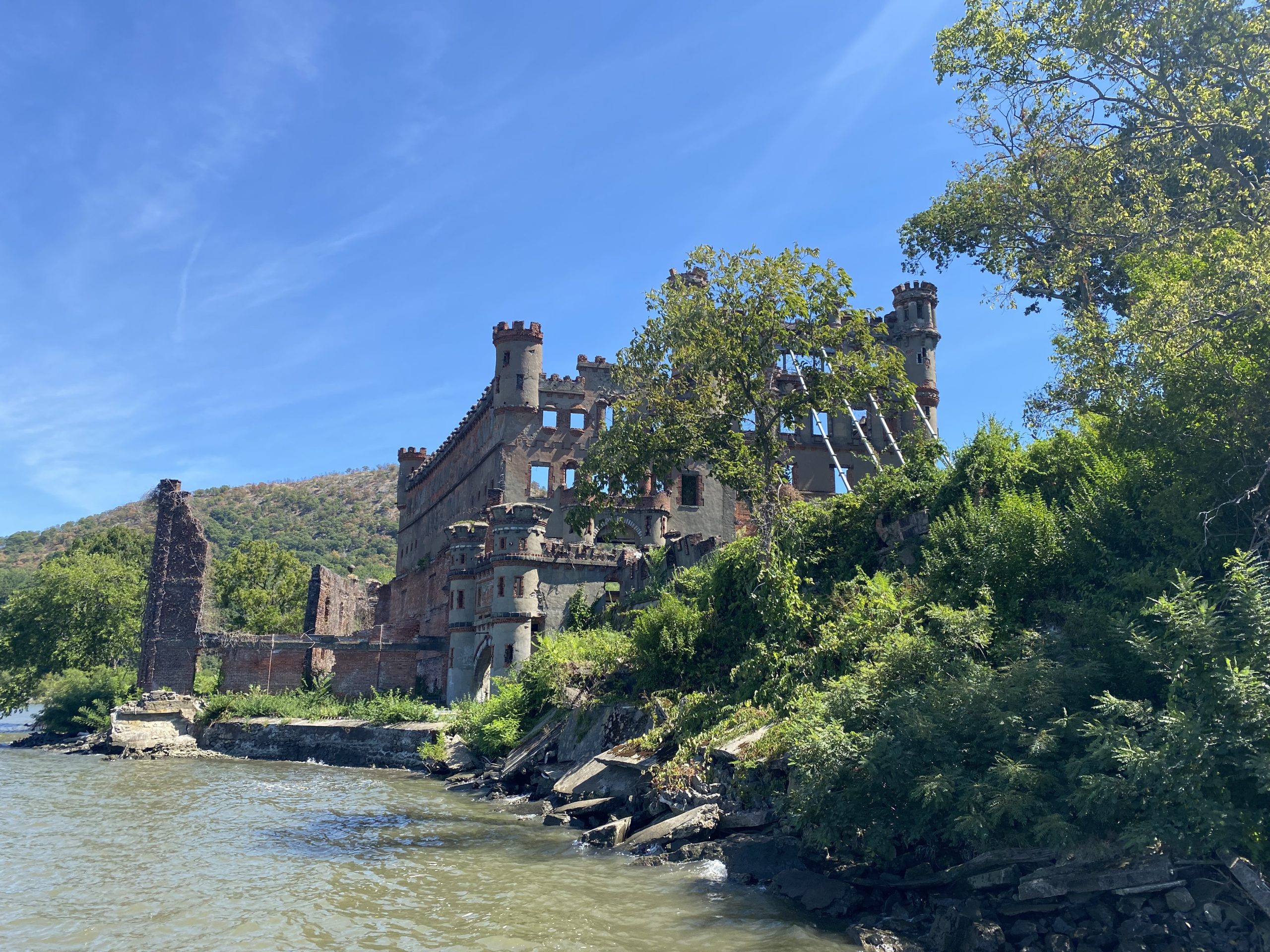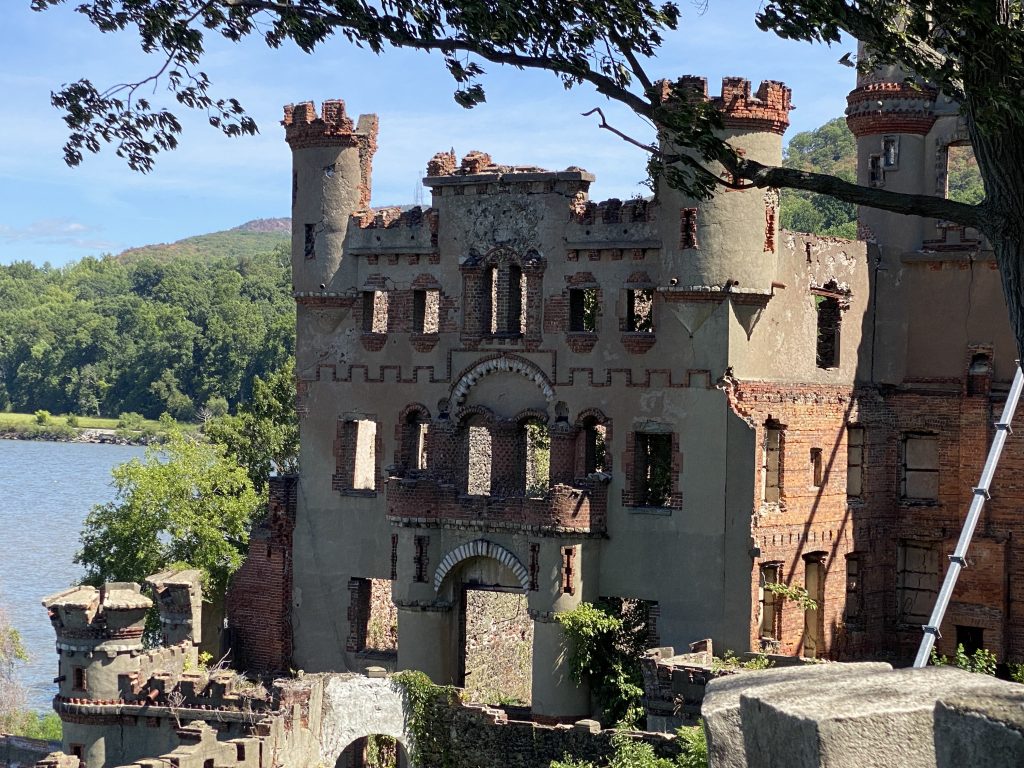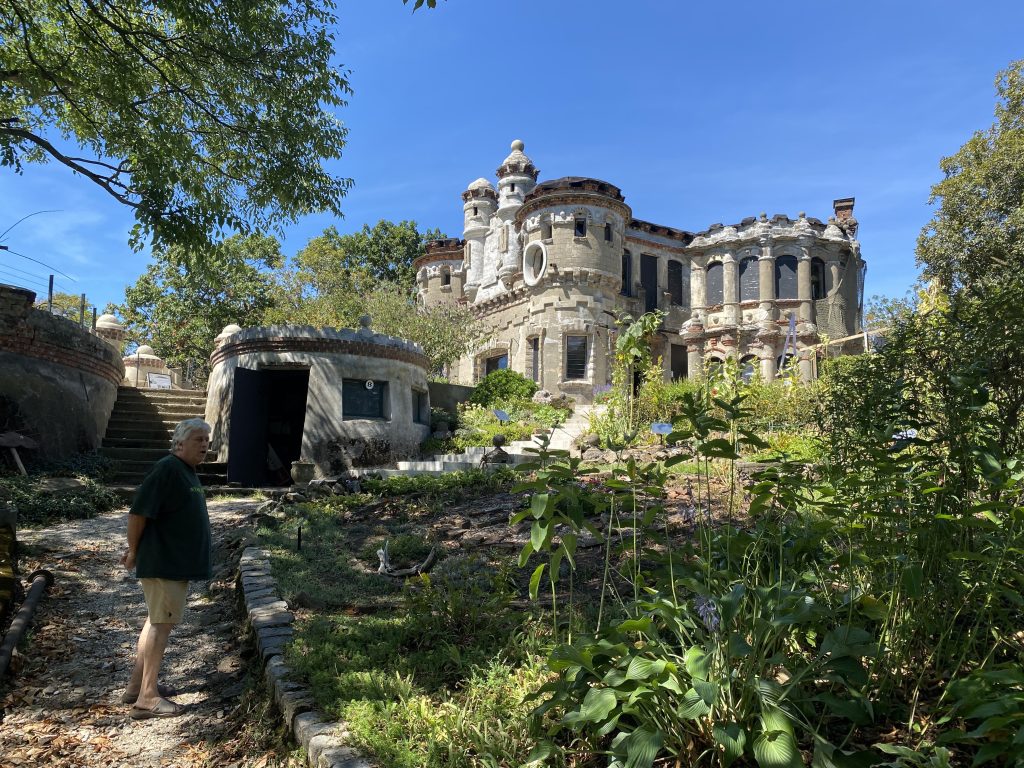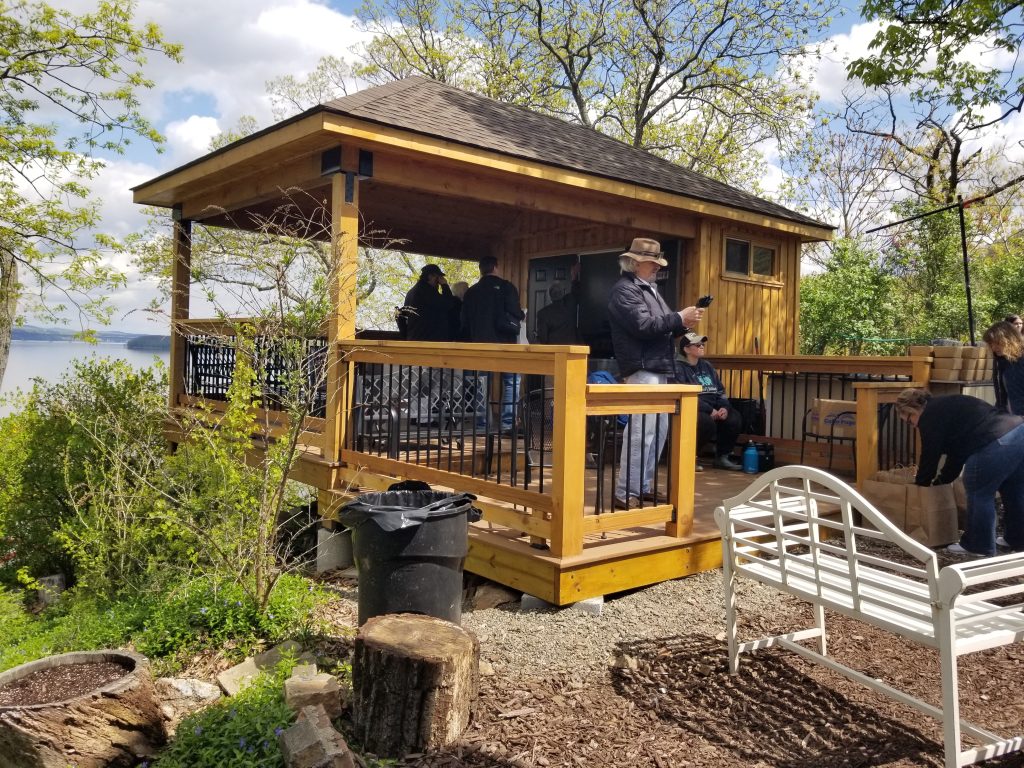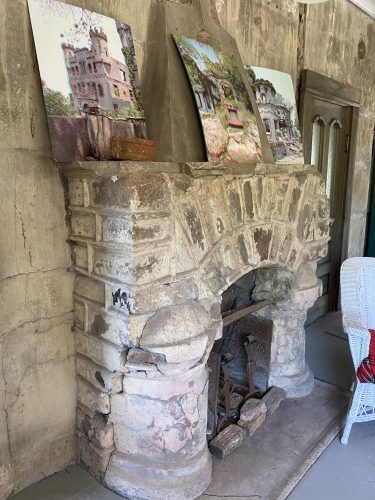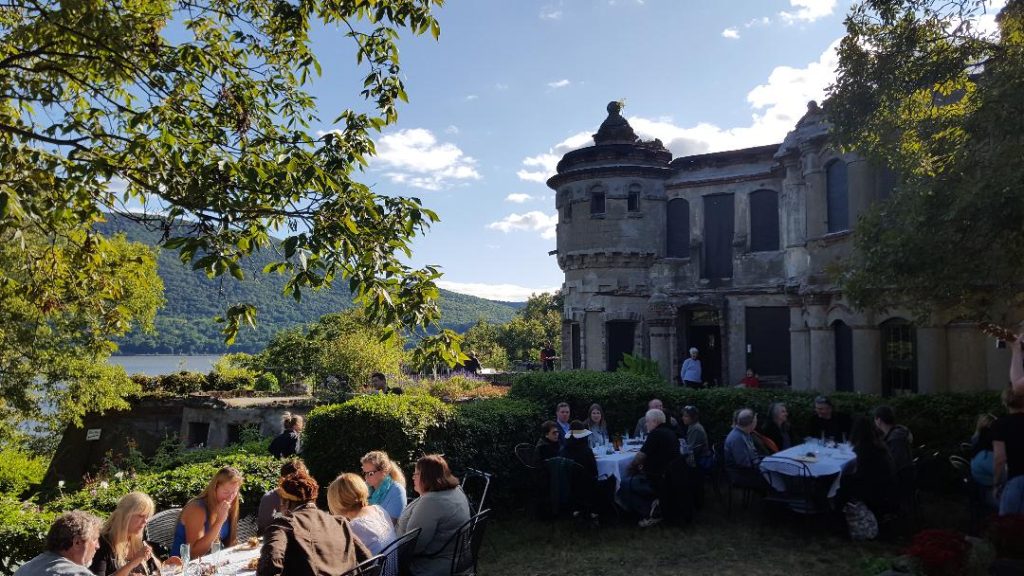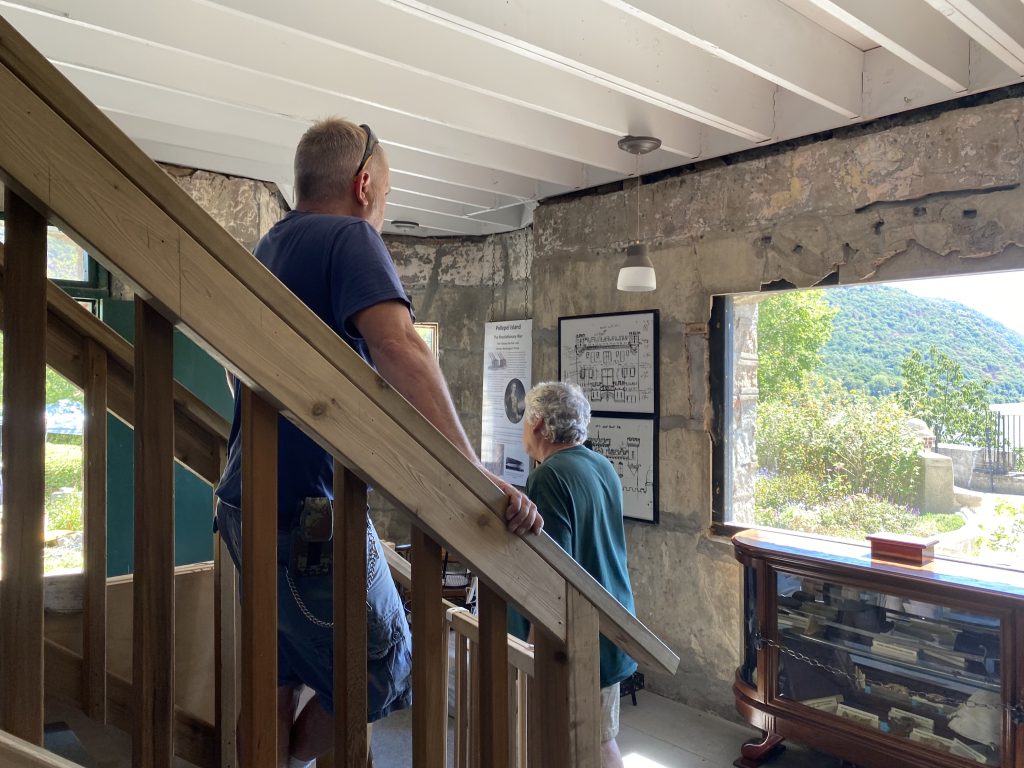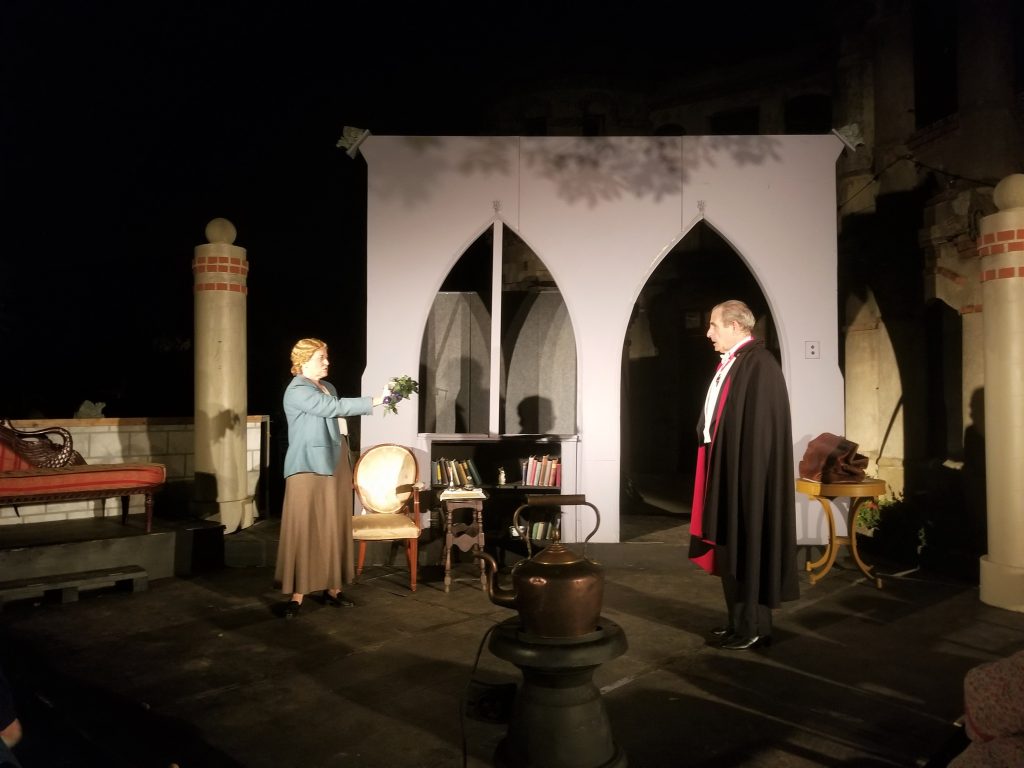Bannerman Castle is perched on Pollepel Island, a 6.5 acre tract of land in the Hudson River, midway between Beacon, and Cold Spring, NY. Pollepel (pahl-uh-PELL) Island, which is used interchangeably with Bannerman Island, is just 50 miles north of NYC. For those without access to the water, the Metro-North railroad, snaking along the river bank, offers its passengers the best view of the imposing structure. While it’s a fixture on the daily commute, it may not be something they care, or want, to explore. That sentiment is consistent with those New Yorkers who have spent a life time passing up a visit to either the Statue of Liberty or Empire State building, even as they pass by these world renowned structures every day. But somehow, this alluring edifice is different: a castle in the middle of a river, which is both out of place and out of time.
The story of Bannerman Castle begins with Francis Bannerman VI, a Scotsman who arrived as a young boy in New York in 1858, and settled with his family in Brooklyn. Francis’s father began earning a living by selling goods at Navy auctions. In time, Francis, tried his hand at the trade, but his niche business centered not on selling, but buying arms and munitions at government auctions. The young Bannerman grew his trade by acquiring arms from state and federal arsenals, as well as left over military hardware form the Civil war. In a major coup, he bought 90 per cent of the Spanish arms surrendered at the end of the Spanish American war, including a large amount of ammunition. The surplus would be sold to other suppliers, collectors and would-be combatants around the world. The arsenal became so large that it was deemed unsafe and could no longer be housed in Brooklyn or Manhattan, both with growing populations teeming with immigrants in over-crowded tenements.
In a quest to relocate the business, another of Bannerman’s sons, David, came upon an uninhabited, isolated property, an island in the Hudson river, just off Dutchess County, NY. The family purchased Pollepel island, and in 1900, with a tip of the hat to its family heritage, construction began on a castle built in the image of fortresses found in the Scottish highlands.
Beside it, on a smaller scale, though no less impressive, is the residence. While the Bannerman’s took care to isolate their stockpile of weapons and ammunition, they couldn’t prevent it from detonating, which is exactly what happened in 1920. Two hundred tons of shells and gun powder exploded, spreading debris, shattering windows, and shaking up the populous for miles around.
Over the following decades, Bannerman castle and adjoining buildings began to fall apart, and in 1967, the family sold the Island, residence, and castle to New York State for future development plans, but two years later a fire, which looks to have been deliberately set, snuffed out those plans, compromising the stability of the buildings. In the ensuing years, New York State Parks and Recreation was content to let the property return to its near natural state. It was only through the initiative and persistence of nearby residents that the island and castle were reclaimed. In victory, they formed the Bannerman Castle Trust, Inc., and in time, would partner with New York State Parks to bring the island back to life. In 2004, after painstaking years of work designed to increase accessibility and sustainability, the island opened to the public.
Currently, the most popular tour is the half hour boat cruise to and from the island and the ninety minute hike which affords visitors the opportunity to experience the island, its north and south views of the Hudson river, the gardens, and the residence, which is currently undergoing a restoration. The lure of the island is the looming castle, which for over a century has succumbed to withering forces, both natural and man-made. The castle walls have been buttressed by several steel supports angled in a way to hold them in place. That safety measure came at a cost of $300,000.
To this day, raising money for preservation and capital projects is paramount to the attraction’s future. Neil Caplan is the executive director and founder of the Bannerman Trust. He splits that role with managing the Swann Inn, a beautifully furnished bed and breakfast that he and his wife, Darlene, own and manage, in nearby Beacon. The Caplans are refugees from Brooklyn, where Neil worked on and off Broadway, and it was the love of theater that brought him to the Hudson Valley in search of a stage he could call his own.
Little did he think that the stage would be open air performance space surrounded by water, but New York State was still rebuffing efforts to bring the general public back to the island in numbers, however, once that barrier came down and the Bannerman Trust was established, Neil’s Quixotic quest was given new life.
“We’re looking at putting in an amphitheater
But in order to do that we have to make sure the walls don’t fall on anybody.
I have been doing this for thirty years, but people come here and they stay here because they love it. They get the Bannerman bug.”
While an amphitheater is a lofty goal, there are other projects on the island clearly within his grasp. During a late Summer visit, I accompanied Neil and a colleague of his on a motor boat ride to Bannerman Castle. From the dock It’s a modest climb of about 75 steps to the island’s main attraction, which towers precariously above the limited amount of real estate it sits on.
The castle, a former shell of itself, looks as if it could host a site specific production of Macbeth,
or bring back movie memories of medieval knights childishly repelling unwanted knights of the roundtable in “Monty Python and the Holy Grail.” With tours confined to the weekend, weekdays provide time for construction, renovation and restoration. Greeting visitors this Spring is the recently completed viewing pavilion, affording guests a sheltered vantage point to take in an unobstructed vista looking north up the Hudson River, and provides access to the brand new gift shop. Less labor intensive, though no less meticulous an undertaking, has been the rejuvenation of the original Bannerman gardens, which gently cascade down from the residence.
While ongoing restoration continues, the Bannerman home has been serving as a visitor center with artifacts and memorabilia from the home and the era on display. The stone structure serves as an architectural companion to the fortress, but bares none of the destruction and lingering scars that beset the castle. The Bannerman Trust solicits and benefits from cash grants, and relies heavily on sweat equity through its volunteers and docents as well services often provided at cost by local contractors. In 2017, West Point, the military academy, the castle’s neighbor to the south, dispatched its civil engineering class to design and build a wooden bridge on the island as well as assisting in the construction of restrooms.
While Neil Caplan has been involved for over 30 years on all facets of the island’s renovation,
He hasn’t lost sight of what transported him from Brooklyn in the first place: the desire to establish a theatre. And he has found it. Wedged between the residence and the castle, Neil has fashioned an intimate stage with near circular seating, which at capacity can accommodate close to 90 patrons. Though the venue is small, Neil thinks big, and will be presenting productions of Nunsense, a staged reading of the Anastasia File, and the return of the fan favorite, Bram Stoker’s, Dracula; in a setting even the caped one might find unsettling.
The space has been used for Broadway concerts, movie nights, and other community-based events. From time to time, the Bannerman Trust has coupled performances with five course farm-to-table meals prepared by local chefs to benefit preservation efforts for both the castle and the residence. And if you’re looking for a destination wedding, its hard to find a more scenic and serene setting. Of course, you need not make that level of commitment to enjoy the island.
Tours of Bannerman castle and its environs are currently running on weekends May thru October, departing from Beacon, NY, aboard the 44 seat Estuary Seward. If you’re seeking a more rustic adventure you can approach Pollepel Island by canoe or kayak adhering to a particular time slot for arrival.
Additional details, programs and promotions can be accessed by visiting https://bannermancastle.org.
By Tom Farkas

